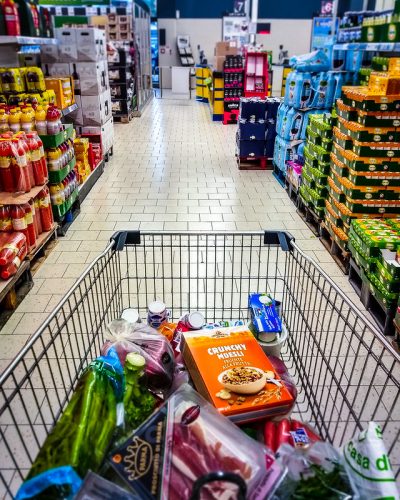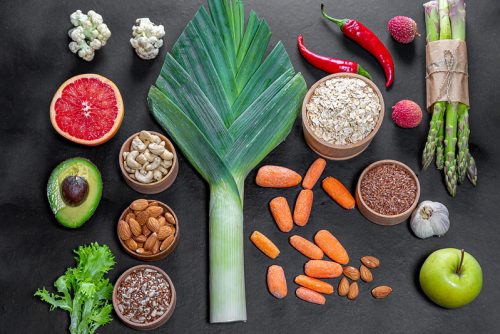The spread of COVID-19 is affecting every aspect of our lives right now, and this includes food-related practices. More and more groceries and supermarkets are operating on a limited time table, if not closed. Some restaurants only allow takeaways as well. Lastly, a couple of items on your grocery list might not be available in the stores due to supply constraints.
Despite these happenings, it is essential that we still take good care of our health. It is also crucial while we’re in the middle of the pandemic since we need a healthy immune system to fight back the virus. With this in mind, here are some tips that can help you draft your diet plan despite the said crisis.
Plan Ahead
Do not just think about what you’re going to prepare for you and your family for the next three days. Instead, you should visualize your meals from breakfast to dinner for at least a week. You have to consider which viands you have to prepare, the exact ingredients needed, the food preparation method, and the amount of time and energy you will need to make the meals.

Source: flickr.com
Once you have listed down everything you need, that’s the only time you should go to the grocery. Take note that you should minimize your trips to crowded places like these as it’s too dangerous. Therefore, make sure to maximize your shopping time by buying enough stocks for 1 to 2 weeks.
Prioritize Fresh Products
You should also make it to the point that you maximize the food available in your pantry. However, you should know how to prioritize. The most important rule that you need to keep in mind is to use the fresh ingredients first or utilize those with shorter shelf life.
Examples of these include reduced-fat dairy products, vegetables, and fruits. One technique for your fruits and vegetables to last long is by freezing them. Do not worry as they will retain their original nutrient profile despite staying inside the refrigerator.

Source: flickr.com
Listed below are some nutrition-packed food that has longer shelf lives.
- Grains: frozen brown rice, instant oatmeal, refrigerated pizza crust, couscous, and quick-cooking pasta
- Bread: whole-grain English muffins, bread, bagels, corn tortillas, frozen whole wheat waffles, and wraps
- Sauce: salsa and tomato pasta sauce
- 100% Juice: shelf-stable cartons, canned, frozen
- Eggs: egg whites in packages, fresh eggs
- Soup and Broths: shelf-stable cartons, frozen, canned
- Vegetables: plain frozen, sun-dried, low sodium canned, sturdy fresh vegetables (onions, potatoes, broccoli, and celery)
- Fruits: plain frozen, dried, canned in water or juice, and sturdy fresh fruit (citrus and apple)
- Cheese: cubed or grated hard cheese
- Nuts and seeds: canned, bagged, nut butter
- Seafood: fish fillet, canned tuna, sardines, and salmon, and frozen shrimp
- Frozen chicken, pork, and beef
Control Portion Sizes
Being at home for an extended period due to lockdowns and quarantine may lead to overeating. Partner this with this inactivity, then you’re prone to a health disaster. Therefore, if you’re drafting your diet plan, make sure that your portion sizes are at par with the standard.
You can do this by seeking assistance from national food-based dietary guidelines. Here you’ll find what constitutes a right yet healthy portion. Be mindful that adults and young children have different allocations, and you need to consider this when preparing a meal.
“The healthiest meals emphasize whole grains, vegetables, and fruits—serve them in the greatest amounts. Meat portions should be smaller—this will save money and help keep dietary saturated fat in check,” share Carol Byrd-Bredbenner, Ph.D., RD, FAND, and co-authors.
Try Online Shopping

Source: pixabay.com
We’re living in the digital age now. Most food companies who are trying to control their losses brought about by the pandemic are now extending their services via the online platform. As a household, you should utilize this approach. It will not only save you a lot of time but will also minimize your people-to-people interaction.
Keep in mind, however, that unlike supermarkets, you have to wait for a day or two to receive or pick up your orders. Therefore, it is vital to plan and manage your groceries.
Limit Sugar Intake
The World Health Organization recommends a maximum of 6 teaspoons of sugar intake per day. This amount is equivalent to less than 5 percent of an adult’s total energy intake; therefore, if you crave for something sweet, better to consume fresh fruits than any other delicious dessert.
Always remember that one can still achieve proper nutrition amid these unfortunate circumstances. All you have to do is follow the tips above and partner this with a physically active lifestyle.